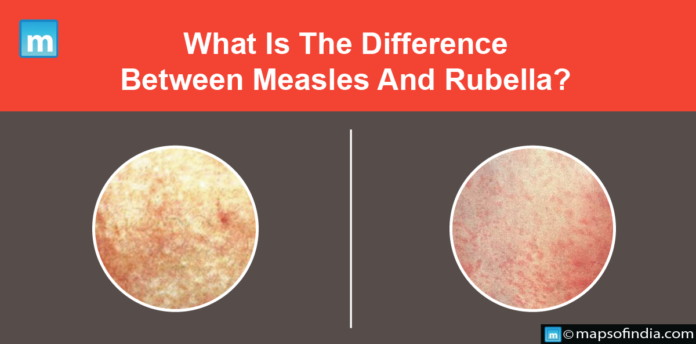The Indian government missed the deadline to eliminate Measles and Rubella (MR) in 2020 for various reasons like the COVID-19 pandemic. India conducted a phased measles vaccine catch-up immunisation during 2010-2013 for children aged 9 months-10 years in 14 states. To ramp up vaccinating the unvaccinated population, Mission Indradhanush was launched in 2014. India also adopted a national strategic plan for eliminating Measles and Rubella.
What is Measles?
The virus causes a highly contagious infectious disease called Measles. When exposed to an infected person, the symptoms develop in 10-12 days. The initial symptoms of the disease include cough, fever, inflamed eyes, and runny nose. After the symptom starts within two or three days, small white spots may form inside the mouth, known as Koplik’s spots.
A red, flat rash from the face spreads to the entire body three to five days after the symptoms start. Common complications of this disease include middle ear infection, diarrhoea, and pneumonia. There are fewer chances of occurrence of blindness, seizures, or inflammation of the brain.
Measles is an airborne disease that spreads from one person to another through the sneezes and coughs of infected people. It can also spread from direct contact with nasal or mouth secretions. It is a very contagious disease that can easily affect people with low immune systems and is considered a childhood illness but can affect people of any age.
No specific treatment is available for an infected person, although supportive care may improve outcomes. It may include healthy food, oral rehydration solutions, and medications to control fever and other symptoms. Measle vaccines are delivered with other vaccines, effectively preventing the disease.
What is Rubella?
Rubella, also known as German measles, is an infection caused by the rubella virus. Half of the people affected with the disease don’t even realise it, as it is often mild. The rash begins around two weeks after exposure and lasts for three days. It usually starts on the face and later spreads to the body. The rash is not as bright as measles and is sometimes itchy.
Swollen lump nodes that last a few weeks are common in it. There can also be an occurrence of fever, fatigue, and sore throat. Other complications may include testicular swellings, bleeding problems, inflammation of nerves, and encephalitis.
It spreads from one person to another through the air via coughs of infected people. Before and after the appearance of the rash, people stay infected with the disease. People will be immune to this disease in the future after getting recovered. Diagnosis is confirmed by finding the virus in the throat, blood, or urine.
As per reports, a single dose of the rubella vaccine, which is 95% effective, can prevent the disease. It is often given with the MMR (Measles and Mumps vaccine). World Health Organisation (WHO) said, “India has vaccinated over 348 million children between 2017 and March 2023 through nationwide measles-rubella vaccination campaign. Measles cases dropped by 62% between 2017 and 2021, from 10.4 to 4 cases per million population, while rubella cases decreased by 48%, from 2.3 to 1.2 cases per million population. As India moves towards last mile coverage for MR elimination, catch-up campaigns are being undertaken nationwide.”




